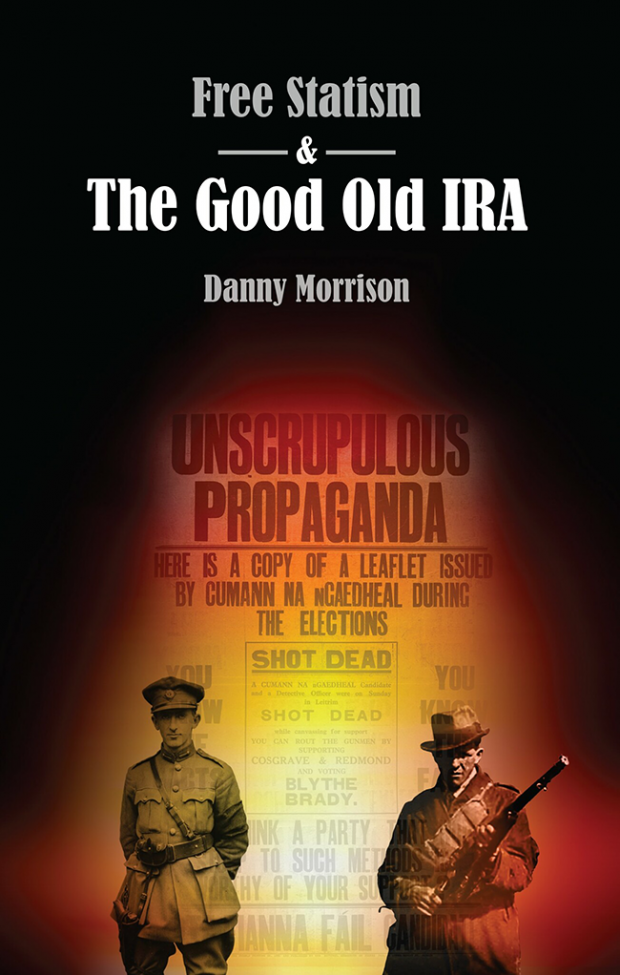7 April 2022 Edition
'Good Old IRA' challenges Partition politics

In the mid-1980s when I was in the Long Kesh prison camp, in the H Blocks, I found myself engaged in a conversation with a fellow Republican POW in which we assessed the task facing the Republican Movement at that time.
The IRA was in a strong position militarily, carrying out effective operations against the British crown forces in Ireland, in Britain, and in Europe.
Sinn Féin was finding its feet politically and election results were not only undermining British propaganda, still in criminalisation mode, they were a tangible demonstration of the popular support for the struggle among nationalists and exposed the SDLP’s attempts to secure an internal solution to the conflict.
Both Garrett FitzGerald’s 1984 New Ireland Forum and the Anglo-Irish Agreement/Hillsborough Accord signed in 1985 by Margaret Thatcher, heralded as a major step forward in Anglo/Irish relations by the Dublin political establishment, had more to do with bolstering the SDLP which couldn’t prevent the growing influence and relevance of Sinn Féin on its own.
In our H Block discussions, we concluded that, for republicans to win political power in Ireland, we had to challenge the Free State establishment. If we wanted to shape the country in the manner envisaged in the Proclamation as read by Pearse at the GPO in Dublin or to establish a society modelled on the philosophy of Connolly, this would be the hardest part of that struggle.
The political elite had entrenched itself in power in the 26 Counties in the aftermath of the counter-revolution of 1922/23 that saw the defeat of the anti-Treaty IRA.
As Connolly predicted, the green flag replaced the ‘Butcher’s Apron’ but little else changed. It was against this background that the backlash against republicanism, dressed up in ideological attacks on the modern IRA, took place.
The idea that the IRA of the Tan War, of Tom Barry, of the Flying Columns, and the Michael Collins’s ‘Squad’ were morally superior to those who were fighting the same British Army and against the same occupation on the streets and in the fields of the North as those freedom fighters of 1916 to 1922 became common currency.
It became a political and ideological imperative to disassociate the actions of ‘The Good Old IRA’ from those of the modern era. Arising out of this came the deliberate policy and strategy of the Free Staters to push a revisionist interpretation of history that would legitimise their conduct since the end of the Civil War in 1923. It would justify their stewardship of the 26 County state that gave undue privilege to the Catholic Church and often functioned on the basis of corrupt clientelist politics.
Out of this came ‘The Good Old IRA’, a pamphlet cataloguing numerous actions carried out by the IRA during the Tan War.

• Mick Timothy
Director of Publicity for Sinn Féin Danny Morrison was approached in 1985 by Brian McDonald who had written some articles in An Phoblacht/Republican News attacking historical revisionism under the pseudonym Jack Madden.
His idea was to look at the tactics used by the IRA during the Tan War and set them against those employed by the modern IRA through the 1970s, 80s and 90s.
Tom Barry famously said, “They said I was ruthless, daring, savage, bloodthirsty, even heartless. The clergy called me and my comrades murderers; but the British were met with their own weapons. They had gone down in the mire to destroy us and our nation and down after them we had to go.”
In real terms, this saw civilians killed, informers shot and their bodies ‘disappeared’, RIC and other British personnel shot dead in front of their families.
Despite this, Fine Gael and Fianna Fáil hang the cloak of moral rectitude on the ‘Good Old IRA’.
Sinn Féin’s success in the 2020 26 County election exposed the political reality that Fianna Fáil and Fine Gael are two sides of the one reactionary coin. And it was no surprise that the ‘civil war’ parties went into coalition to stop Sinn Féin. Where did we hear that before?
The ideological onslaught went to a different level of venom and it is in that context that Danny Morrison reproduced ‘The Good Old IRA’, with an extended introduction including a chapter titled Modern Free Statism.
Here he acknowledges that to label someone a ‘Free Stater’ is to insult them. However, the difficulty for those in the political establishment in the 26 Counties who define ‘Ireland’ in terms of the State that stops at the British imposed border is that by acting as a bulwark against reunification and in effect give unionists a veto over the future of the country they are de facto defining themselves as Free Staters.
Indeed in 2020, Micheál Martin described a referendum on unity as ‘divisive’ and ‘partisan’. It would not happen on his watch!
The fact that RTÉ, described as the ‘national’ broadcaster, geoblocks programmes to prevent Six County viewers from tuning in, uses maps that on occasion omit the six north eastern counties, and refers to the Northern State as ‘Northern Ireland’ reinforces the partitionist mindset of the State.
And the refusal to open a passport office in the North to deal with the backlog of requests for Irish passports underpins the view that people from the Six Counties are ‘other’.
Also denying Northerners the right, as Irish citizens, to vote in Presidential elections is as clear an indication as any that the State stops at the border. What clearer an example of Free Statism can you get than that?
Ultimately, this whole debate needs to be read in the context of the Free State political system circling the wagons in their bid to thwart Sinn Féin. They want to prevent a United Ireland, based on the Proclamation of 1916, that will break the cosy political, economic, media, and social cartel that has allowed them control the state since partition.
So, the constant bombardment we get through the media and those commentators who keep telling the electorate that Sinn Féin is not fit to be in government because of its connection with the IRA exposes a classic case of historical miasma. It was good enough for the IRA of the 1920s to engage in armed rebellion, but not ok for Northern nationalists to wage armed struggle against the British state.
The new edition of 'The Good Old IRA' also reprints Mick Timothy’s 1984 editorial Béal na mBláther which is an exposé of the two-faced hypocrisy of the Free State political class, not least Fine Gael.
The editorial is the icing on the cake for me and the new edition of ‘Free Statism and The Good Old IRA’ should be read by all republican activists as a blueprint for challenging those politicians and commentators whose bread is buttered on the partitionist side!
Available from: sinnfeinbookshop.com




